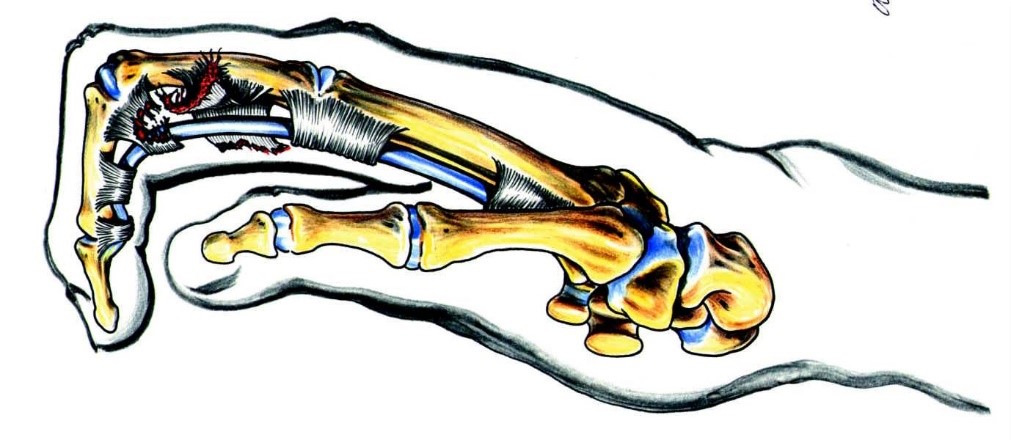First aid for acute climbing injuries
Follow the advice below to reduce pain, swelling and lay the foundation for a good rehabilitation. It is important to act quickly.

PRICE is important in acute injury treatment and stands for: Protection, Rest, Ice, Compression and Elevation. Compression and elevation are the most important measures in acute injury treatment.
Finger injury
Acute finger injuries are quite common in climbing. A finger injury is usually caused by a combination of the crimp grip and a sudden increase in weight (most often when an athlete loses their footing while climbing). The PRICE principle also applies here, apply compression and ice down. If a finger is out of position, there may be a fracture or a joint out of position. Contact the emergency room immediately.
Ankle injury
In the event of an ankle injury, start PRICE treatment immediately. Make sure to apply ice and compression with a bandage as soon as possible. You should try to avoid straining your ankle for the first 24 hours. If your foot or ankle is out of position, consult a doctor immediately for assessment and follow-up.
Acute knee injury
It may happen that the knee gets a sharp twist. Start PRICE treatment immediately. It is important to compress the knee joint with ice and a bandage, and make sure that the injured leg is higher than the rest of the body. If you suspect ligament or meniscus damage, go straight to the emergency room for examination and follow-up. With rapid and appropriate emergency treatment, it is possible to examine the knee. If the knee swells, it is difficult to make a diagnosis. Therefore, make emergency treatment as quick and effective as possible.
Dislocated shoulder
If an athlete falls on an outstretched arm, the shoulder can dislocate. This is very painful. If a healthcare professional is present, the shoulder can be put back in place. If this is unsuccessful, the athlete must be taken to the emergency room immediately.
Muscle strain
During a difficult move, muscle fibers in the thigh or groin may be torn. Use the PRICE principle and apply extra compression over the most painful area. Avoid straining the leg for the first 24 hours.


